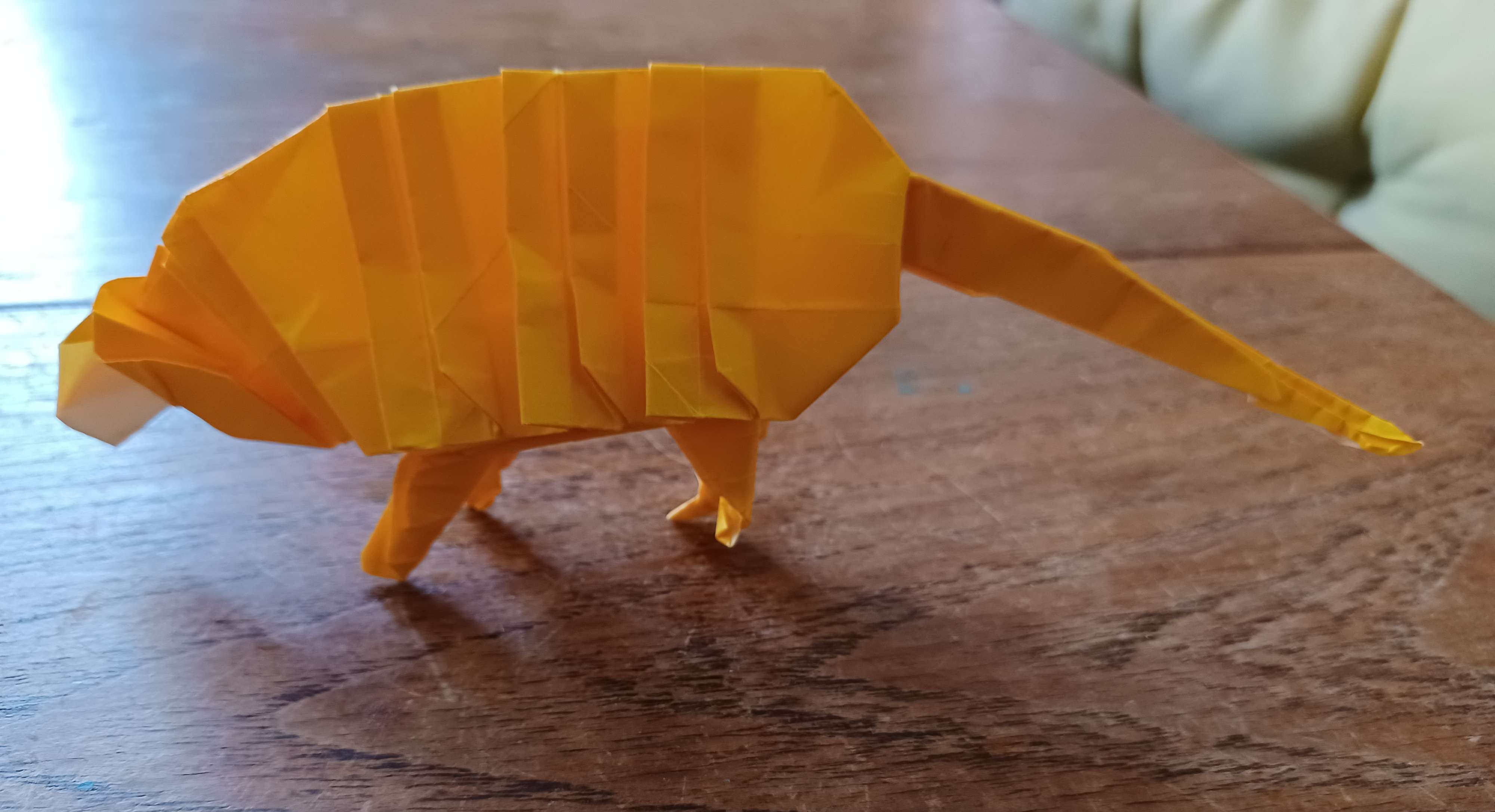Armadillo
Like the Chubby Ghost, this model was designed as part of a challenge. My main fixation was with achieving integrated pleats for the armadillo’s bands. While I think I achieved that nicely, there’s no sequential way to fold the model, (the only method is to precrease everything and then collapse) so there won’t ever be a video tutorial. To get the legs of the model, Elias stretch the long flaps at the corners (this can be done through a series of squashes,) then fold behind the remaining triangle of loose paper. You’ll also want to spread squash each of the pleats on the back symmetrically and sink one half. This procedure will double the number of bands. Have fun folding!
I went back to this model about four months later. My biggest pet peeve with the original was that the manipulations used to make the head were extremely erratic. Furthermore, the thickness of the model is distributed mostly in the legs. The thickness of the body is never more than three times the thickness of the paper square. Because of this, the original model came off as clunky and stubby. It didn’t look like an armadillo at all.
The first issue was solved by redesigning the head. I doodled with an old test fold for a few minutes and quickly managed to get a snout and color changed eyes. I fixed the second trouble simply by using thinner paper.
While I am pleased with the efficiency* of the design which sits slightly above 1.0, I still have qualms. The back plates are too wide and cover up too much of the back, and are of an unusual number. The body is also too boxy. I think I will leave remedying these issues for a future armadillo design, I’m satisfied enough as is, and the structure is too closely arranged to change easily.
*Efficiency is a termed used by origamists to refer to any optimizable parameter. Here it refers to the ratio of the length of the folded model to the side length of the original square.
(Edited February 14th 2025)
Scroll down for the original.

